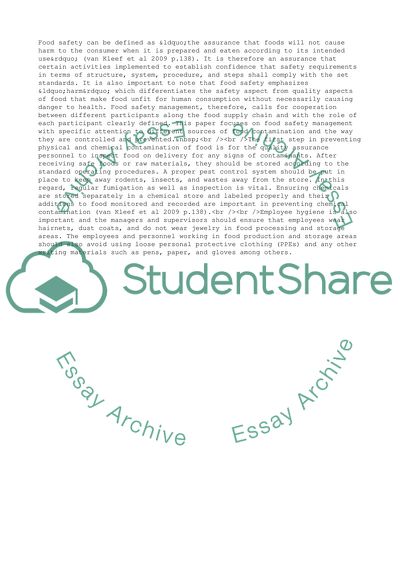Cite this document
(Food Safety Management Coursework Example | Topics and Well Written Essays - 3250 words, n.d.)
Food Safety Management Coursework Example | Topics and Well Written Essays - 3250 words. https://studentshare.org/management/1818698-food-safety-management
Food Safety Management Coursework Example | Topics and Well Written Essays - 3250 words. https://studentshare.org/management/1818698-food-safety-management
(Food Safety Management Coursework Example | Topics and Well Written Essays - 3250 Words)
Food Safety Management Coursework Example | Topics and Well Written Essays - 3250 Words. https://studentshare.org/management/1818698-food-safety-management.
Food Safety Management Coursework Example | Topics and Well Written Essays - 3250 Words. https://studentshare.org/management/1818698-food-safety-management.
“Food Safety Management Coursework Example | Topics and Well Written Essays - 3250 Words”. https://studentshare.org/management/1818698-food-safety-management.


